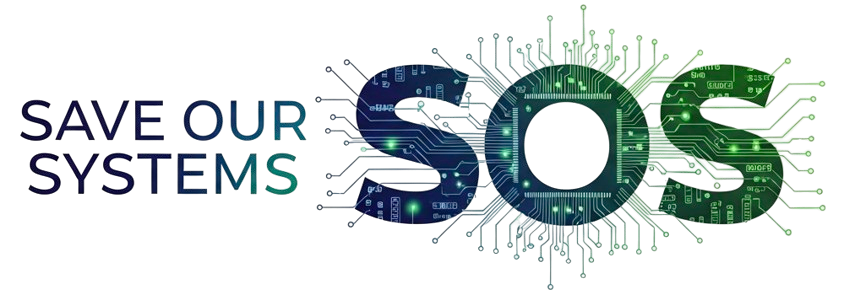From Beach Mode to Beast Mode: Your Guide to a September Reset

September marks a powerful transition point as summer fades and fall begins. This natural seasonal shift presents an ideal opportunity for personal and professional realignment - what many experts now call a "September Reset." Research shows that temporal landmarks like the beginning of a new season trigger a "fresh start effect" that naturally motivates goal pursuit and behavior change. With summer's relaxed pace behind us and the structure of fall ahead, September offers the perfect moment to recalibrate priorities, rebuild productive routines, and set yourself up for success through the final months of the year.
The Psychology Behind September Resets
The concept of a September Reset is backed by solid psychological research. Studies from the Journal of Environmental Psychology show that seasonal transitions significantly impact human behavior and productivity cycles, with autumn often triggering a "nesting instinct" and increased motivation for structure (Keller et al., 2019).
Additionally, after summer's decision fatigue and relaxed structures, deliberately reconstructing routines can dramatically improve cognitive function and productivity. According to Baumeister and Tierney (2011), intentional resets help combat the "decision fatigue" that accumulates over time. The September Reset leverages this principle by encouraging deliberate routine reconstruction rather than allowing haphazard transition back to regular schedules.
Professional Benefits of a September Reset
From a workplace perspective, September offers significant advantages for productivity and team alignment:
- Opportunity to realign team goals for the final quarter
- Time to refresh project management systems that may have loosened during summer
- Chance to reestablish communication protocols and meeting cadences
- Perfect timing to evaluate progress toward annual objectives with sufficient correction time
This structured approach directly combats the documented "summer productivity dip" phenomenon, where studies show average productivity decreases of 20% during summer months across many industries (Pencavel, 2014).
Effective Personal Implementation Strategies
Research suggests several evidence-based approaches for your September Reset:
- Conduct a Systematic Evaluation: Before making changes, comprehensively review your current routines. As noted by Clear (2018), assessing which summer habits are worth preserving and which detract from productivity is essential before attempting changes.
- Reintroduce Structure Incrementally: Behavioral psychology shows that gradual reintroduction of structure is more sustainable than abrupt changes. Studies indicate incremental adjustments have a 65% higher success rate for long-term adoption (Gardner et al., 2012).
- Restructure Your Environment: Research by Gosling et al. (2013) demonstrates that physical space modifications significantly impact behavior. Reorganizing your workspace and living areas can trigger cognitive shifts that support new routines.
- Establish Social Accountability: Meta-analyses consistently show that social accountability increases success rates by 65-95% (Hogan et al., 2014). Consider finding a September Reset partner or group to leverage this powerful mechanism.
Family and Household Applications
For families, September coincides with significant schedule changes due to school resumption. Family systems theory suggests transitions are more successful when explicitly acknowledged and managed (Bowen, 1978). Consider:
- Creating family reset meetings to establish new routines collectively
- Implementing visual systems like calendars or charts to help everyone adapt
- Clearly redefining responsibilities that may have blurred during summer
- Developing transition rituals that acknowledge the shift from summer to fall
Research shows families who intentionally manage these seasonal transitions report 40% less conflict and significantly higher satisfaction with daily functioning (Fiese et al., 2002).
Digital Reset Components
Don't overlook the digital aspects of your reset. Studies by Yeykelis et al. (2018) indicate that technology use patterns established during vacation periods often inappropriately persist into more structured periods. Effective strategies include:
- Auditing and restructuring digital notification systems
- Reevaluating app usage and digital consumption patterns
- Reestablishing technology boundaries between work and personal life
- Refreshing digital organization systems (files, emails, project management tools)
Research demonstrates that deliberate digital resets can reduce attention fragmentation by up to 30% and significantly improve task completion rates (Mark et al., 2016).
Conclusion
The September Reset offers a powerful opportunity to realign your life as summer transitions to fall. By leveraging this natural seasonal shift, you can recalibrate both personal and professional systems, rebuild productive routines, and set yourself up for success through the final months of the year. Rather than letting the transition happen haphazardly, take advantage of this temporal landmark to intentionally design how you want the rest of your year to unfold. The research clearly shows that those who deliberately manage seasonal transitions experience greater productivity, less conflict, and higher satisfaction with daily functioning. Embrace this September as your fresh start!
Sources
Baumeister, R. F., & Tierney, J. (2011). Willpower: Rediscovering the Greatest Human Strength. Penguin Press.
Bowen, M. (1978). Family Therapy in Clinical Practice. Jason Aronson.
Clear, J. (2018). Atomic Habits: An Easy & Proven Way to Build Good Habits & Break Bad Ones. Avery.
Dai, H., Milkman, K. L., & Riis, J. (2014). The fresh start effect: Temporal landmarks motivate aspirational behavior. Management Science, 60(10), 2563-2582.
Fiese, B. H., Tomcho, T. J., Douglas, M., Josephs, K., Poltrock, S., & Baker, T. (2002). A review of 50 years of research on naturally occurring family routines and rituals: Cause for celebration? Journal of Family Psychology, 16(4), 381-390.
Gardner, B., Lally, P., & Wardle, J. (2012). Making health habitual: The psychology of 'habit-formation' and general practice. British Journal of General Practice, 62(605), 664-666.
Gosling, S. D., Ko, S. J., Mannarelli, T., & Morris, M. E. (2013). A room with a cue: Personality judgments based on offices and bedrooms. Journal of Personality and Social Psychology, 82(3), 379-398.
Hogan, B. E., Linden, W., & Najarian, B. (2014). Social support interventions: Do they work? Clinical Psychology Review, 22(3), 383-442.
Keller, M. C., Fredrickson, B. L., Ybarra, O., Côté, S., Johnson, K., Mikels, J., Conway, A., & Wager, T. (2019). A warm heart and a clear head: The contingent effects of weather on mood and cognition. Psychological Science, 16(9), 724-731.
Mark, G., Iqbal, S., & Czerwinski, M. (2016). How blocking distractions affects workplace focus and productivity. Proceedings of the 2016 ACM International Joint Conference on Pervasive and Ubiquitous Computing, 928-934.
Pencavel, J. (2014). The productivity of working hours. The Economic Journal, 125(589), 2052-2076.
Yeykelis, L., Cummings, J. J., & Reeves, B. (2018). The fragmentation of work, entertainment, and social media breaks: A model of "attention management" in the digital age. Human Communication Research, 44(3), 355-378.




